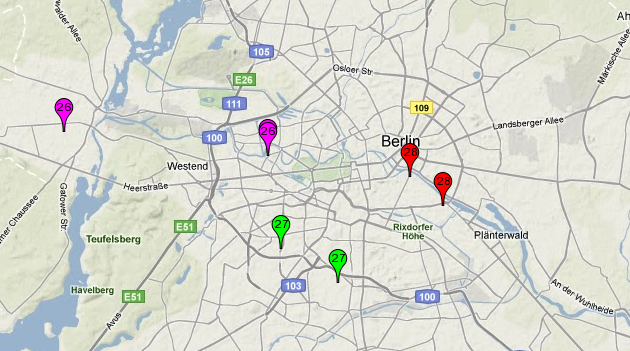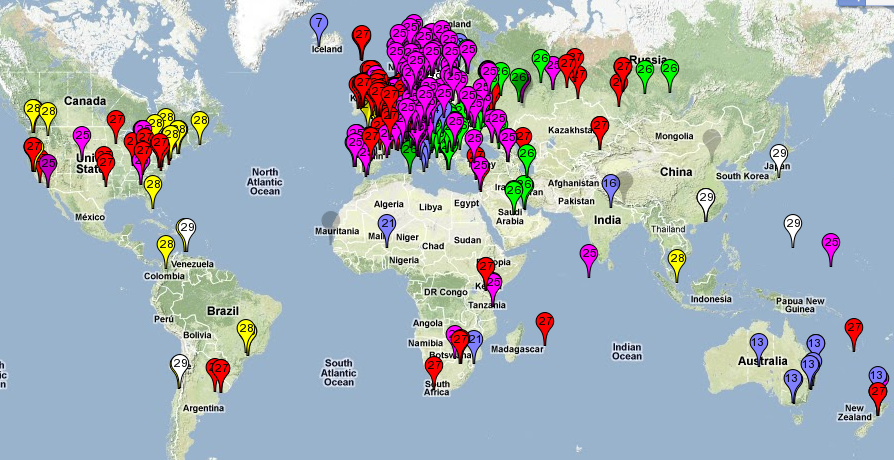In this article we describe how we use RIPE Atlas to determine which instance of a name server a probe uses.
As described in New RIPE Atlas Features in the Making , each RIPE Atlas probe performs "anycast instance discovery" measurements. This means, for each DNS root name server, we determine which instance of a name server a probe uses.
We compile the data from all probes and build maps showing these results for each Atlas probe. In other words, the map shows the "gravitational radius" for root DNS server instances. This gives a unique insight into the client base for the root DNS operators. An example of such a map can be seen in Figure 1 below. The colour of the pin indicates the instance of K-root this particular probe is connecting to:
- Purple: AMS-IX (Amsterdam, The Netherlands)
- Green: DENIC (Frankfurt, Germany)
- Red: LINX (London, UK)
- Yellow: NAP (Miami, Florida, USA)
- White: JPNAP and DIX-IE (Tokyo, Japan)
- Blue: other (local) instances of K-root
Figure 1: Which probe sees which instance (colour coded) of k-root?
On the map shown in Figure 2, you can see the results of the seven probes located in and around Berlin, Germany:
- Three connect to the K-root instance at AMS-IX in Amsterdam, The Netherlands (purple)
- Two connect to the K-root instance located at DENIC in Frankfurt, Germany (green)
- Two connect to the K-root instance located at LINX in London, UK (red)

Figure 2: Which probe see which instance (colour coded) of k-root?
This information can be useful for DNS root server operators as well as ISPs to determine whether there is room for improvement in terms of routing between end hosts (or rather, their DNS resolvers) and servers. This can result in reviewing of peering relations, or even deployment of new DNS root server instances.
We will make new visualisations available based on this data. We’ll also make the data available to our users.
In this article, we focus only on instances of K-root. On the RIPE Atlas root instances map , you can also specify other root servers. You can also find other RIPE Atlas maps on that site.






Comments 0
The comments section is closed for articles published more than a year ago. If you'd like to inform us of any issues, please contact us.